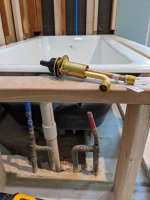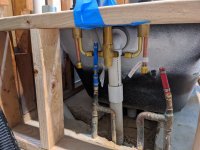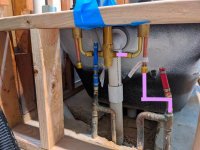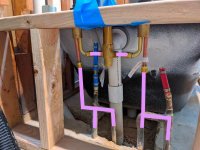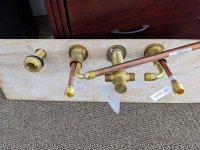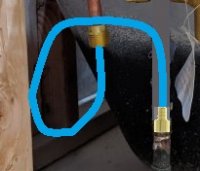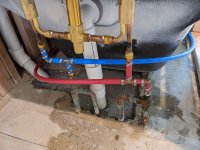See attached image. I have a bath tub with roman faucet on one end and a shower on the opposing end that I need to plumb. I plan onPEXx to the shower valve, copper from it to the shower head.
But given the limited room and the need for T's on the faucet end how should I plumb this?
I've got to plumb together the three bits of the faucet, as well. Should I use stainless braided hose? I read somewhere that it is not recommended for closed space.
But given the limited room and the need for T's on the faucet end how should I plumb this?
I've got to plumb together the three bits of the faucet, as well. Should I use stainless braided hose? I read somewhere that it is not recommended for closed space.
Attachments
Last edited by a moderator:

